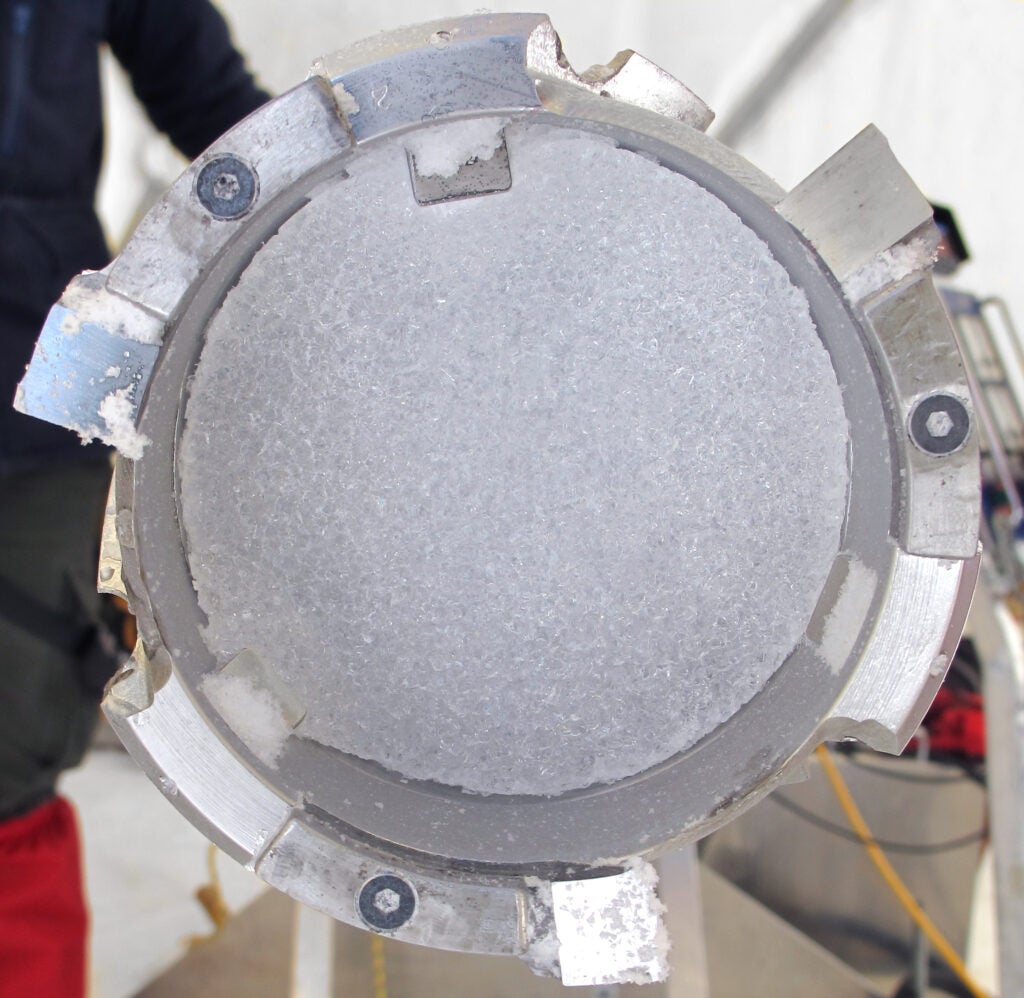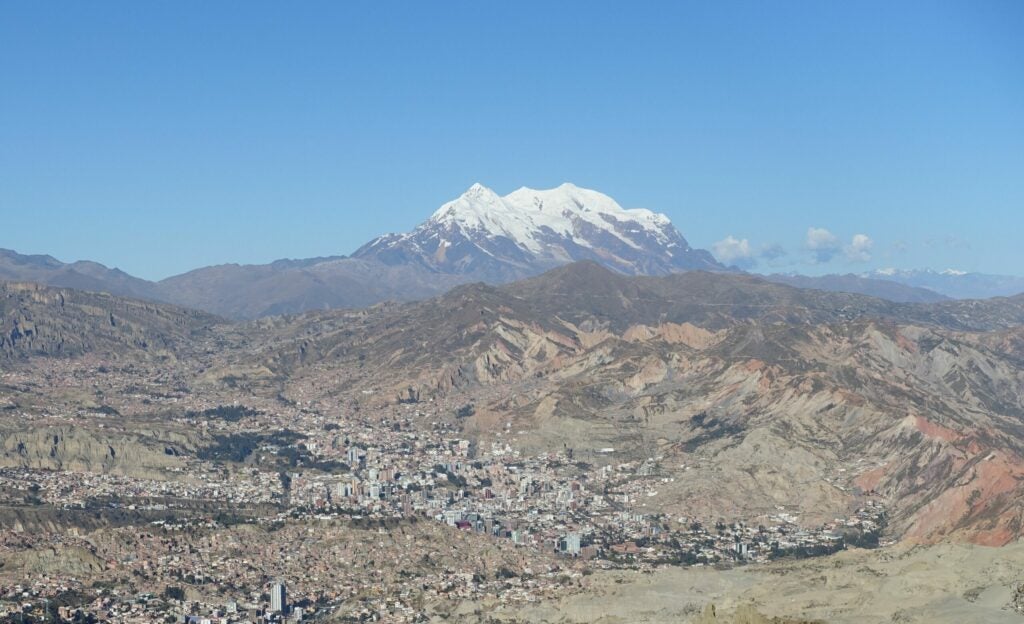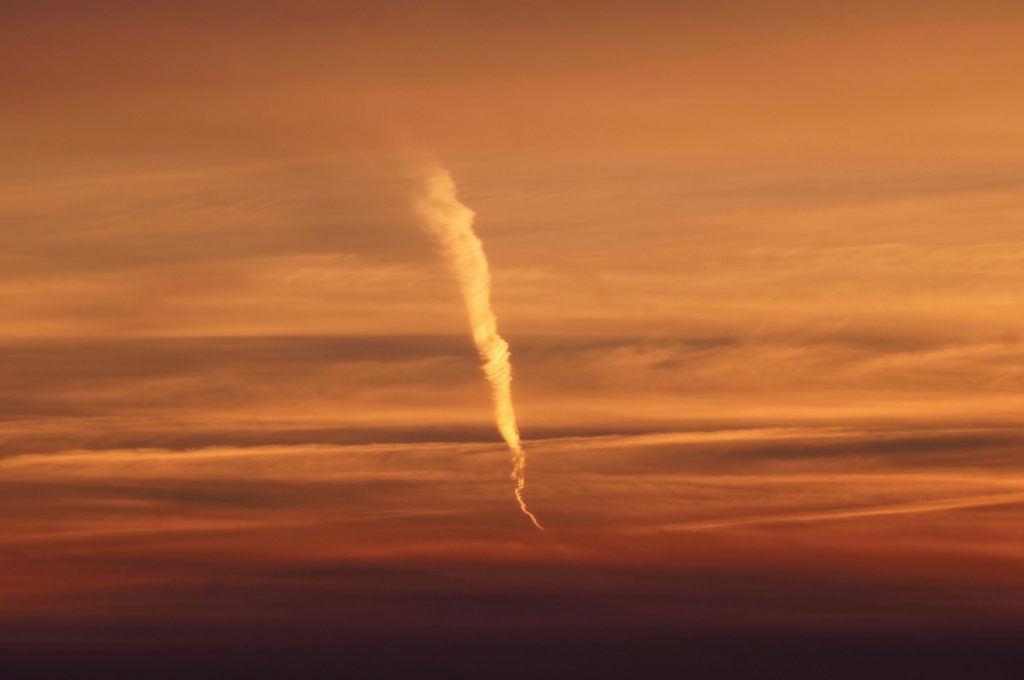When the Black Death barreled through Europe in the 14th century, people had every reason to believe the end of the world was at hand. During the height of the pandemic, entire towns were felled. At least 75 million people met gruesome deaths, and far too few were left to pick up the pieces. Sometimes, there weren’t enough survivors to bury the dead. Grain rotted in the fields because no one was left to harvest it.
And metal mining ground to a halt. When smelting ceased, lead that would have been released into the atmosphere stayed in the ground. Amidst the chaos, air pollution plummeted.
It turns out that we’ve never been able to match the plague years for pristine air, at least when it comes to lead pollution. A recent study indicates that much less lead occurs naturally in the air than we thought—in fact, there should be almost none. Scientists measured lead trapped in an ice core from the Swiss-Italian Alps. They found that lead levels dropped dramatically only once in the past 2,000 years, during a time that coincided with the Black Death pandemic. This means that in Europe, lead levels in the air have been elevated for thousands of years.
Most people think about air pollution as a problem that began with the Industrial Revolution, but we’ve been spoiling the quality of our air for a very long time. It has harmed our health throughout history, from Medieval Europe to the Roman Empire to Ancient Egypt and Peru, and continues to do so today.
But we’ve taken steps before to clean up the air we breathe, and our polluted history can give us a few hints about what to watch out for.
Lead all around
For decades, the general consensus has been that pre-industrial lead pollution was negligible, says Alexander More, a coauthor of the new paper and a historian at Harvard University and the Climate Change Institute at the University of Maine in Orono.
“The silent assumption is, what could pre-industrial people produce?” he says. “There were a lot fewer people, therefore the pollution wasn’t as bad.”
Any evidence of lead in the atmosphere before the Industrial Revolution had been blamed on volcanoes, which spew heavy metals when they erupt. But government and industry standards have overestimated how much lead naturally exists in the air, argue More and his posse of climate scientists, historians, and archaeologists.
They dug up a 236-foot-long ice core in the Swiss-Italian Alps. This block of ice reaches farther back in time than any other taken from the European Alps, More says. By measuring the lead particles that became trapped in the ice year after year, the team could estimate how much lead was in the air over the past two millennia.
Usually, researchers have to melt slices of ice cores to analyze their innards, which means a chunk of ice can only be used once. But More and his colleagues have been testing out a new technique that preserves the ice while taking extremely precise measurements. They used a laser to melt tiny slivers—only a few microns deep—off the top of the sample.

Previous ice core investigations haven’t been able to hone in on brief periods when lead pollution might have dropped. The laser dot, however, can pinpoint a specific point in time. “This allows us to look at the record in years or even months or seasons, which has never been done before,” More says.
He and his colleagues discovered a single four-year period when atmospheric lead plunged to undetectable levels. It corresponded to the years 1349 to 1353, right when the Black Death was ravaging Europe.
More and his colleagues suspected that lead pollution dropped because too few people were alive to mine it; in some areas, the Black Death wiped out up to 50 percent of the population.
The team pored through historical archives collected from around Western Europe. They found government records and eyewitness testimony of the plague’s arrival in different cities and countries. Sure enough, the biggest lead mines closed or were abandoned as the plague spread.
If lead levels drop to nearly zero when we stop mining, that indicates that any lead we have in the air today is the result of human activity. “The lowest levels of lead air pollution, that we detect during that period of the plague, in fact are natural levels which are very close to zero,” says More, who reported the findings in June in the journal GeoHealth. Some researchers have said a connection between the Black Death and a drop in pollution is speculative at this point, reported Gizmodo, while others believe it fits in with similar patterns of other pollutants like methane.
Today, we recognize lead for the blight it is. We know that it damages the nervous system and has been linked to violent behavior and developmental problems in children. “It’s one of the worst poisons that we can put in our body,” More says.
But in pre-industrial Europe, lead was everywhere. Lead was used to seal roofs because it is softer and more malleable than other metals. It was used in cups, coins, utensils, and water pipes. “It contaminated households and soil and people and water, but the smelting of it also contaminated the air,” More says.
All of this pollution would have impaired people’s health. Physicians might have described extreme cases in their records, but people with low-grade lead poisoning probably went unnoticed.
Given how profoundly lead can alter intelligence and children’s development, More suspects that lead poisoning has hampered humanity’s progress. “How far ahead could we be if lead pollution had not been so pervasive for so many centuries?” he wonders. “What have been the cumulative impacts…of lead air pollution for centuries on human development and on civilization? I suspect that it’s very considerable.”
A polluted past
Of course, air pollution was a problem long before the Black Death reared its ugly head.
Burning wood and charcoal for warmth and cooking degraded the indoor air quality in ancient human settlements. Smoke pollution was a major cause of ill health for most pre-industrial societies, Stephen Mosley, an environmental historian at Leeds Beckett University in England, said in an email.
Anthracosis, or black lung, has been found in mummified lung tissue from Egypt to Peru; people put up with the acrid smoke because it kept away mosquitoes and other pests, Mosley says.
Some civilizations did have chimneys, allowing fumes from the fire to escape. But many dwellings were not so well ventilated. “Right in the middle would be a fire pit and maybe a hole in the top if you were lucky,” More says. “The smoke would be absolutely pervasive, everywhere.”
Researchers have built reconstructions of Viking longhouses and sent undergrads to camp out in them. “People have actually tried to sleep in these longhouses with a fire going overnight,” More says. “They wake up with red eyes and puffy eyes, their noses are drooling. It’s just not pleasant experience.”
Lead is just one of many metals that humans have smelted and released into the air throughout history. Scientists recently reported evidence of copper metallurgy dating back 2,700 years in ice cores from the Andes. Copper was essential for the wealth of pre- and post-colonial societies in the Andes, and formed the basis for Andean metallurgy. “[Copper] objects primarily served to communicate social status, political power, and religious authority and awe,” coauthor Anja Eichler, an environmental chemist at the Paul Scherrer Institute in Villigen, Switzerland, said in an email.
Eichler and her colleagues used an ice core from Illimani glacier in the Bolivian Andes to trace 6,500 years of atmospheric pollution history in the Andes. They found signs of copper pollution from around 700 to 50 BC, the earliest known human-related copper emissions in that area.

Filthy air did not go unnoticed in pre-industrial societies. People have been complaining about air pollution since ancient Greek and Roman times. Outdoor air pollution became a problem with the rise of early cities, Mosley says.
“Stinking rivers and sick slaves in Roman mines, for instance, have been related to harmful pollution from lead and silver metallurgy,” Eichler says.
The testimonies of contemporary medical writers indicate that lung diseases were widespread in these societies. Smoke from potteries and smelting furnaces in ancient Athens and Rome quickly became a nuisance. “Classical writers such as Horace complained of the blackening of fine marble buildings, and he also worried about the effects of the reek and fumes of Rome on his health,” Mosley says.
“The smoke and stink of early cities—pre-industrial and industrial—was difficult to ignore,” Mosley says. “It was in early cities that the first legislative steps were taken to abate it—in an attempt to protect the air as common property.” Around 2,000 years ago, civil claims over smoke pollution were heard before Roman courts. At the time, people tried to escape pollution by separating homes from polluted working area, Eichler says.
During the Industrial Revolution, the right to breathe clean air was eroded. In Britain, few air pollution cases reached the Common Law courts. “The new industrial society made a pragmatic trade-off: dirty air in return for economic success, jobs, and cheap consumer goods,” Mosley says. “Laws protecting the rights of individuals to enjoy clean air were weakened, rather than strengthened.”
Same poison, different day
Around 1800, in the years marked by the dawn of the Industrial Revolution, the amount of lead in More and his team’s ice core skyrocketed. It stayed well above pre-industrial levels for the next 150 years, only starting to ease after legislation like the Clean Air Act was enacted in the 1970s to control air pollution.
Today, lead levels are pretty similar to pre-industrial levels. That doesn’t mean we’re in the clear—there is no safe amount of lead in the air, More says. “Just because we have heard that preindustrial lead levels are safe, that current comparable levels are safe, that is not true,” he says.
Lead poisoning remains an enormous problem around the world, even now that we know it is toxic. Exposure to lead contributed to more than 850,000 deaths in 2013. We still have lead smelters today that put hundreds of tons of lead into the air; most have moved to developing countries in Asia, More says.
The largest and last smelter in the United States closed in 2013 in Herculaneum, Missouri, just south of St. Louis. It had to settle for damages with the Department of Justice, and leaves behind a lasting impact on the surrounding community. The smelter emitted 82 tons of lead per year, More says, which eventually deposited in the soil.
Contaminated soil lingers in the communities around former lead smelters in the United States, and continues to poison people in places like the village of Kabwe in Zambia and Mengzi Village in China. Cities that had high car traffic through the 1970s also have higher lead air pollution because lead from car exhaust deposited and accumulated over time until leaded fuel was banned, and what was deposited remains in the soil and dust, More says.
Once the lead is liberated in the atmosphere, it settles in the soil and can be kicked back up into the air due to construction or wind. Severe drought can dry the soil, making it more prone to becoming dust and being blown back into the atmosphere, More says. So where climate change causes drought, it will exacerbate the problem.
More hopes that understanding how much lead should actually be floating through the air can help guide future efforts to control pollution and protect the people who live around lead smelters. “Natural lead levels are very, very low, therefore lead is still dangerous and should be phased out of use completely or at least…we should consider how much lead we still want to use,” he says.
Recording past air pollution can illuminate the effects of evolving technologies on air pollution, and the effectiveness of pollution control measures, Eichler says. Today, Chile and Peru are two of the largest copper producers in the world; Chile alone accounts for more than 30 percent of global copper production. The ice core record Eichler and her colleagues examined shows an unprecedented jump in copper pollution in the second half of the 20th century, thanks to the rise of open-cast copper mining and smelting in Chile. But after the 1980s, copper pollution dropped off. “This demonstrates the success of implementations of air pollution control measures in Chilean smelters to reduce heavy metal dust,” she says.
Today, we can measure what metals and other particles lurk in our air, as well as the air our that filled our ancestors’ lungs. We haven’t figured out how to wipe out pollution yet, but tracing it during the Black Death and earlier moments in history can help us grapple with modern problems.
“By better understanding the pollution problems of the past we can make more informed choices for the future,” Mosley says.









